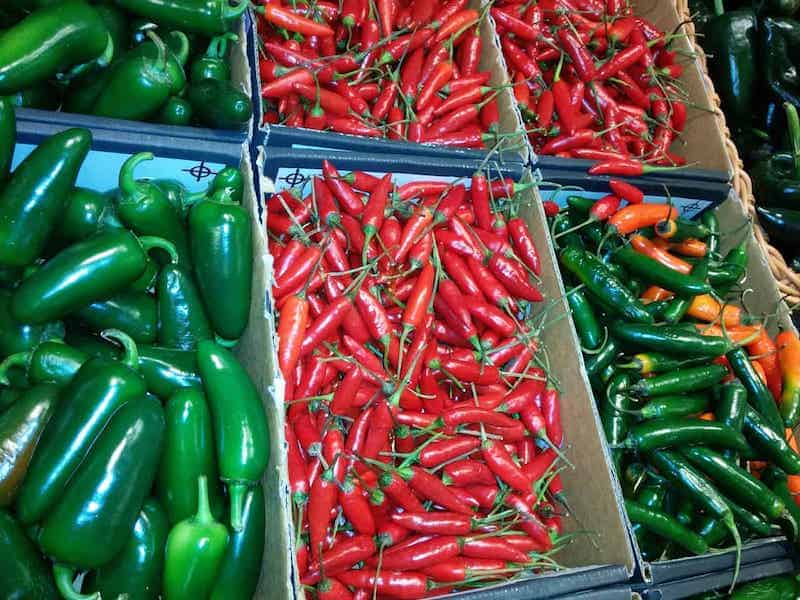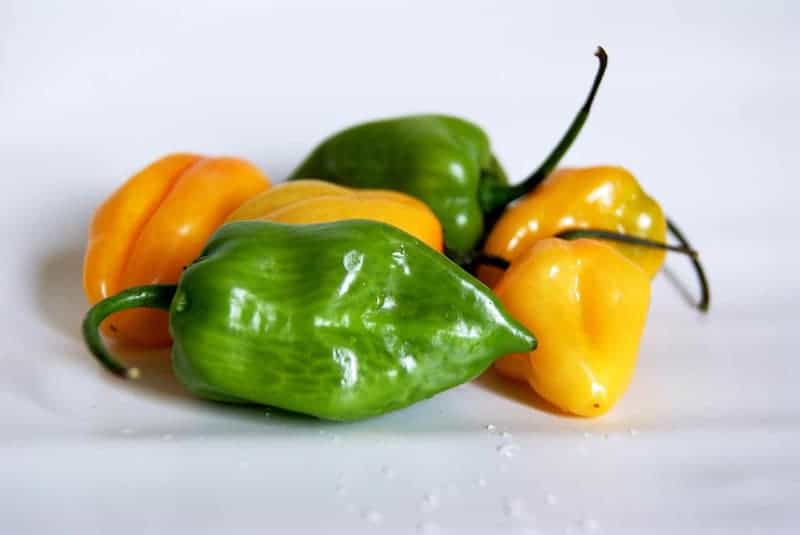Best Peppers for Fermented Hot Sauce
Fermenting takes time – the more time, the better. But it’s undoubtedly worth it when it comes to hot sauces, as fermenting helps to reduce the heat and adds flavor to your sauce.
Of course, the final result greatly depends on the ingredients used, mostly the pepper. You can use chili peppers, jalapeños, habanero peppers, manzano peppers, scotch bonnets, serrano peppers, or any combination of these. Read on for more details on the best peppers for fermented hot sauce.
What’s the Best Pepper for Fermented Hot Sauce?
The answer is relatively straightforward – any hot pepper depending on your preferences, other ingredients, and fermenting technique. There are a couple of tips that may help you select the perfect variety, though.
First, always choose fresh peppers instead of pickled, as they have more flavor and are generally hotter.
Secondly, choose a slightly fierier pepper than you can bear when eating fresh, as the heat will reduce during fermenting.
Thirdly, consider the visual aspect – the traditional color for hot sauces is red, but you can go green or yellow instead.
Now that you know what to keep in mind when choosing the perfect pepper, read on to find out the differences between specific pepper types and advice on combining them with other ingredients.
Chili Pepper
Chili pepper is a timeless classic for hot sauces. Although chili pepper is generally considered one of the spiciest, in reality, it comes in a variety of hotness degrees, sizes, and colors. Regardless of the species, mature peppers are almost always hotter than ripe ones.
If you can’t find chilies at a grocery store or prefer milder hot sauce, you can use chili flakes instead of whole peppers. However, as the pepper becomes more mellow during fermenting, don’t be afraid to go for a hotter kind.
Some of the most popular chili species for hot sauces are Aji pepper (features fruity notes that become more noticeable after fermenting), Anaheim pepper (mild hotness), Bird pepper (a very hot kind), and Cascabel pepper (green and moderately hot).
Jalapeños
Hot sauces don’t necessarily have to feature red or orange peppers – you can use green jalapeños instead. They have milder hotness compared to chilies and a more noticeable flavor.
Both fresh and pickled kinds will do the job, but fresh jalapeños are generally hotter. However, picking the perfect jalapeño may feel like Russian roulette, as even fresh peppers in a supermarket may be watery and tasteless.
Here’s a tip – look for wrinkle lines on the pepper. The more lines, the more mature and hotter the pepper. Last but not least, the spiciest part of jalapeños is the white pith inside – by adding more or less of it, you can control the hotness of your sauce.
Habanero Pepper
Habanero is a great choice for those who prefer hot peppers like the Anaheim pepper – and if you consider chilies hot, wait until you try habanero.
To give you an idea of how spicy it is, let’s compare it to other peppers using Scoville heat units. Jalapeños fall under the mark of 10,000 heat units. Chilies – 20,000 to 40,000. Habaneros, however, range from 100,000 to 350,000 heat units. Thus, they’re about ten times hotter than other popular peppers.
This makes the habanero perfect for hot fermented sauces. After it loses a bit of hotness during the preparation, it develops a fruity, floral, sweet flavor. If it’s your first time trying habaneros, pick the green peppers because they have a milder taste.
Manzano Pepper
Manzano is an orange pepper that is much less fiery than a habanero. It features sweet citrusy notes and ranges between 12,000 to 30,000 on the Scoville heat scale, similar to jalapeños. The name “Manzano” comes from Spanish for “an apple,” and these peppers really do look like apples. Another way to spot a Manzano pepper is to look at the inside – unlike other peppers, they have black seeds, which can be used as a spice for your sauce. If you prefer milder hot sauces with a rich flavor, you should definitely try out Manzano pepper.
Scotch Bonnet Pepper
Here’s another variety for those who prefer their peppers hot. The Scotch bonnet is just as fiery as habanero. This pepper can be easily spotted by its squashed shape and bright red color. Despite its hotness, during fermenting, the Scotch bonnet pepper develops a sweet, fruity flavor. Lastly, the funny part is – this pepper has absolutely nothing to do with Scotland; it’s typically grown in the Caribbean.
Serrano Pepper
Serrano peppers look very similar to jalapeños but may be a better choice for a fermented hot sauce as they are spicier. When choosing a serrano pepper, the same rule as for the majority of other kinds applies – mature peppers are hotter and can be spotted by wrinkled lines. The white pith inside contains most of the heat, so you can regulate your sauce’s spiciness by adding more or less of it.
Mix and Match
A combination of different pepper kinds makes the best fermented hot sauce. By mixing peppers, you get more control over the color of your sauce, its hotness, and flavor notes.
You can mix habanero and chili peppers to get milder hotness with sweet, fruity notes in a red sauce or jalapeños with serrano if you prefer green peppers. Get creative and add fruits, garlic, or spices to the brine to enhance the taste – but be aware not to decrease the hotness too much, as saltwater significantly reduces the heat.
Another thing to keep in mind is how colors combine. Of course, this doesn’t affect the flavor, but a red, hot sauce is undoubtedly more appealing than a brown one. Thus, red, orange, and yellow peppers mix well together, while green peppers go best with other greens or whites. Try not to pair red and green kinds – such a sauce may be tasty, but it won’t look great.
The same rule applies to other ingredients you add. To give you a bit of inspiration – jalapeños and other green peppers go well with green tomatoes, leeks, spinach, kiwi, lemongrass, onions, and lime. When it comes to spices, combine them with black pepper, oregano, coriander, and cilantro.
Yellow and orange kinds work best with bananas, pineapple, yellow cherries, tomatoes, lychees, ginger, turmeric, ground mustard, and curry.
If you’re making a red, hot sauce, add sweet peppers, cranberries, carrots, raisins, wine, saffron, or tomatoes.
In Summary
Practice makes perfect – this saying relates to anything, including cooking fermented hot sauces.
All the peppers mentioned above will help you create a delicious fermented hot sauce, but only after trying several recipes can you determine which is the best pepper for a fermented hot sauce for you personally.
As a final tip, check your local farmers market instead of a grocery store to find new, unusual pepper kinds – perhaps, you’ll come across something not listed in my guide!








